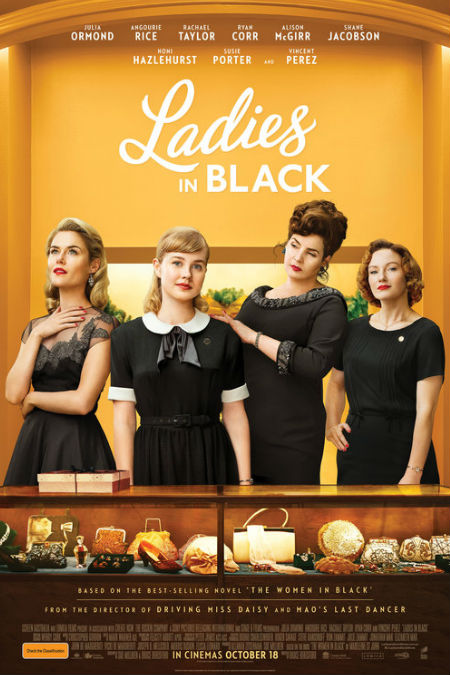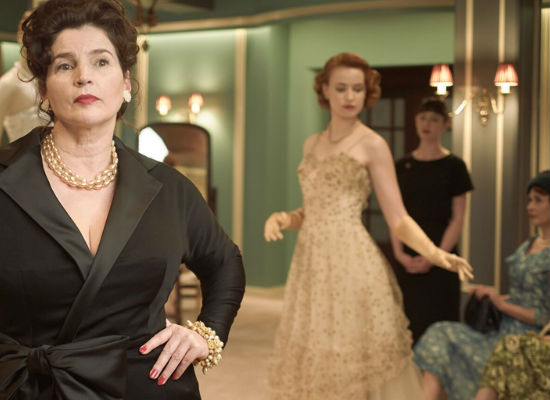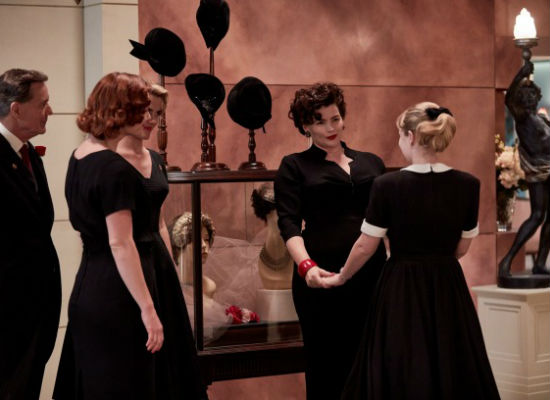
It is tempting in our modern age, which feels blighted, polarised and disconnected like no time before it, to imagine things were so much simpler way back when.
But the truth of the matter is that they weren’t, and any illusions of an untroubled idyll free from social media discord, climate change slanging matches and rising nationalistic brutality to name but a few blistering contemporary societal wounds, is quickly put to rest by a quick look at the history books.
However, not everyone bothers to flip back through these illuminating historical lessons and so it falls to films like Bruce Beresford’s Ladies in Black, based on the book The Women in Black by the late Madeline St. John, to fill in some of the blanks.
Or, at least, point the way.
For this feel-good film, set in 1959-60 as Australia wrestled with some fairly major changes in its social fabric, is by no means an exhaustive exploration of the issues of the day, preferring to canvas them, lightly examine and move on in the interests of telling enriching stories of women grappling with a world in the flux of fairly seismic change.
Of course, that kind of change usually looks seismic in retrospect, with people at the time aware only that change is taking place but unaware of how great it might ultimately prove to be.
And that’s fair enough with the women profiled in this charmingly light and moving film neither historians nor hardcore social researchers; rather they are simply ordinary everyday Australians doing their best to make life work when many of the immediate pre-Second World War certainties of life have been swept away in the postwar upheaval.

One of the great changes is the arrival in Australia of significant numbers of migrants from Europe seeking a life free from past traumas, economic deprivation and new looming tyrannies such as the replacement of brutalist Nazi rule with communist rule.
Two of the major characters in the film, Madga (Julia Ormond), a gloriously-rarefied Slovenian fashionista who married handsome intellectual Stefan (Vincent Perez) as they were both learning English in a migrant camp, and their friend Rudi (Ryan Corr), have fled unspecified past troubles in their countries of birth.
Whatever their current issues, they pale markedly in comparison to living in a land of endless sun and seemingly limitless space, with each of them eager to make the most of the opportunities this new country offers.
Ladies in Black doesn’t go too deeply into what they have fled from and how great a pall those traumas cast over their current lives with only Rudy detailing what happened (rather than how it really affected him), and it’s this unwillingness to dive too deeply into some fairly pressing issues of the time that leaves the film feeling a little too light and fluffy.
Books like The Bookshop of the Broken Hearted by Robert Hillman delve far too deeply into the scarring trauma of loss of family, position and career that afflicted many migrants, who were variously referred to as “refos” or “Continentals” by the largely-Cacausian majority who found the slow but sure sweeping aside of rusted-on societal norms disquieting and unsettling.
But not everyone, as is made clear in the characters of university-aspirant Lisa (Angourie Rice) who is determined to get to university to study to be a poet or actress, and Fay (Rachael Taylor), who is tired of Australian men, and looking for someone who wants more than sex, something she finds in the urbane and enthusiastic Rudy.

These two women, part of a group of sales ladies at the upmarket Goodes department store in downtown Sydney including Magda, the lonely Miss Cartwright (a superlatively-affecting performance by Noni Hazlehurst) and Fay’s co-worker and friend Patty (Alison McGirr) are dealing in their own way with a period of great change (Patty’s storyline is the only one that feels strangely half-done and unexplained), which has the capability to take them with it or leaving them behind, depending on their aptitude or circumstances.
To a woman, bar Miss Cartwright who poignantly watches as everyone but her moves on to greener pastures – the fleetingly sad look on her face when fellow longstayer and closeted gay man Mr Ryder (Nicholas Hammond) remarks, happily, on their status as the ones who will hold the fort while the others desert it is deeply-moving – they rise up to the challenge, with endings as bright and effusive as the endless sunshine that frames every scene.
This is life, largely, writ in traumas with a small “t” each resolved reasonably easily and with only the lightest of complications; even Lisa’s dad, played by Shane Jacobson adapts far more easily than you might expect, loosening his grip on his daughter’s future and taking up the consumption of red wine, olives and salami far more readily than you might expect.
An incisive piece of hard-hitting social commentary Ladies in Black is not, with almost all of the issues it raises given only the most cursory of examinations but that’s okay because what it focuses is the way societies change and develop, taking with them those open to the new worlds opening up.
Perhaps it could have benefited from going deeper and harder into the issues but in the end, it is telling the story of women who formed a microcosm of society at the time, and who, as noted, would not have seen their lives as players in great change but simply as lives being lived, for good and bad, day-to-day.
In that regard, Ladies in Black excels, taking us into a CGI-recreated Sydney of the late 1950s and giving us a small bit of optimistically-enhanced insight into life as it was, as it was becoming and as it would become as Australia, like much of the postwar world, changed beyond all recognition.